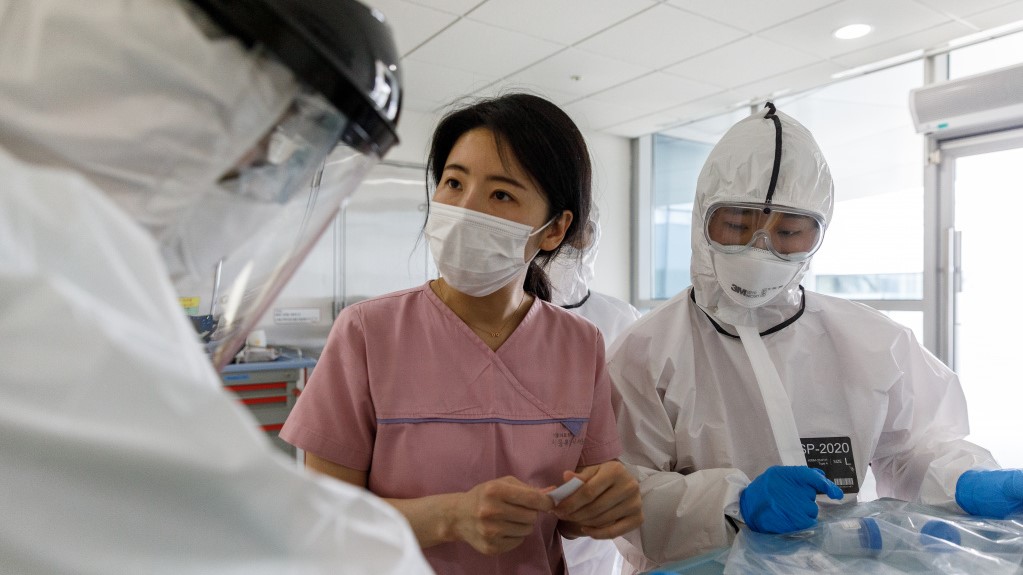Close to 8,000 early-career physicians in South Korea have participated in mass walk-outs and resignations since the beginning of this week. The doctors are protesting the government’s announcement to increase the number of positions in medical schools by 2,000 starting from 2025. The action is taking place in a context where the health system is struggling with an overall shortage of staff, especially outside of large urban centers and in basic health services.
Most of those participating in the action are trainee doctors, upon whom a significant portion of everyday procedures rely. Some hospitals have reported issues in the planned implementation of such interventions. In response, the government issued back-to-work orders and instructed hospital managers to refuse doctors’ resignations.
South Korea has one of the lowest physician-per-patient ratios among OECD countries. In 2021, it stood at 2.6 doctors per 1,000 patients, a whole doctor less than the OECD average. However, this isn’t the first time physicians are striking against plans to increase training spots. During the peak of the COVID-19 pandemic, trainee doctors staged a strike to force the former administration to retract such an announcement, and they succeeded.
As part of its argument against the increase, the Korean Medical Association (KMA) claims that it’s a populist measure proposed to bolster the government’s standing ahead of an upcoming round of elections in the coming months. The KMA alleges that it is unnecessary to expand medical schools’ quotas but rather to raise existing physicians’ salaries and improve their working conditions.
Their perspective is not supported by either the public or other health workers’ associations. Over three-quarters of the respondents in a recent poll expressed support for training more doctors. Similarly, the Korean Health and Medical Workers’ Union (KHMU) welcomed the announcement of the expansion of places in medical schools. Currently, due to the low number of physicians in some specialties and regions, nurses shoulder many of the doctors’ tasks, KHMU officials told People’s Health Dispatch.
The physicians’ resistance to increasing the number of places in medical schools is viewed by many as an expression of the group’s focus on its own standing in society and financial benefit. But this doesn’t mean that the government’s plans should not be analyzed more critically. The KHMU, alongside organizations like the People’s Health Institute (PHI) and the Korean Federation of Medical Activists Groups for Health Rights (KFMA), has emphasized that increasing the number of doctors will only be effective if accompanied by measures to improve the standing of the public health system.
Some within these organizations are concerned that the healthcare reform package announced by the government at the beginning of the month, which includes the expansion of medical quotas, does not adequately address the need for a change in this direction. Instead, the reform package is based on the assumption that the existing market-based model can be improved through minor adjustments.
Past emphasis on the marketization of healthcare has been one of the main drivers of a significant decline in basic health services compared to areas like elective plastic surgery, which are profitable, thus attracting more health practitioners, but only benefit a small number of people. If more doctors are trained within this system without the government assuming greater responsibility for deploying health workers to areas of practice and regions where they are most needed, it is unlikely that the people will experience any substantial benefit.
PHI and KFMA emphasized in analyses published earlier this month that training more health workers must be accompanied by a stronger emphasis on the role of the public sector and a redefinition of the physician’s role in society.
South Korea’s healthcare system heavily depends on the private sector. Considering President Yoon Seok-yeol’s perspective that the country should “mass produce medical-businessmen,” it is highly improbable that the government is considering any significant deviation from this path. As noted by PHI in its analysis, such an approach perpetuates a profit-driven mindset among doctors, discouraging their support for even the most minor changes that could potentially jeopardize their position, leading to actions like the ones witnessed over the past few days.
“Even if we increase the number of doctors by 2,000 while maintaining this structure, there is no guarantee that those doctors will work in local, essential, or public sectors,” KFMA commented on the overarching aim of the health reform. According to the organizations, if the government genuinely aims to strengthen the health system, it should consider expanding public health services, including by establishing public medical schools. Pursuing market-driven policies that have already proven to be unsuccessful will not not do the trick.
People’s Health Dispatch is a fortnightly bulletin published by the People’s Health Movement and Peoples Dispatch. For more articles and to subscribe to People’s Health Dispatch, click here.





